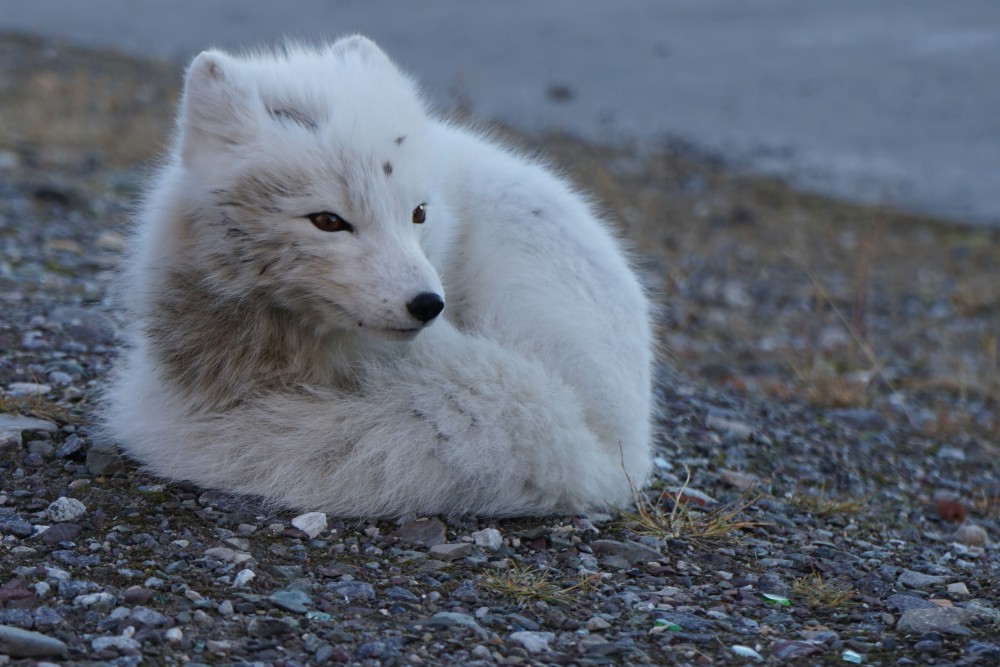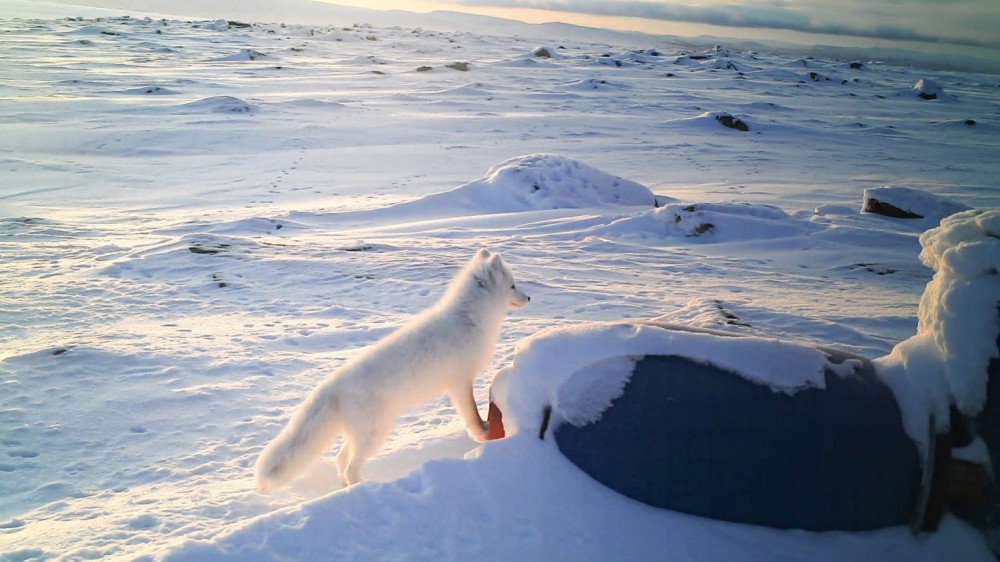
The Arctic fox has a thick fur with dense under-fur and long guard hairs to survive extreme cold.
Photo: Thomas Nilsen
The combined population of Arctic foxes across the Finnish, Swedish and Norwegian areas of Lapland may have hit a record high this year, according to David Bell, the head of the Felles Fjellrev Nord II project.
By YLE News
December 01, 2022
The EU-funded Nord II project aims to save and protect the highly-endangered Arctic fox, which is also known as the white fox, polar fox, or snow fox.
Speaking to Swedish television channel SVT, Bell said that the population of the native Arctic tundra species has been restored to a viable level, with 19 dens recorded in Norrbotten, Swedish Lapland, while 16 were observed in northern Norway.
In Finland, an Arctic fox den was observed for the first time in over 25 years when researchers spotted one near the Enontekiö fells in Finnish Lapland during the summer.
The last confirmed sighting of such a den in Finland was in Utsjoki in 1996.
As recently as 2018, the adult population of the Arctic fox in the Nordic region was believed to have dropped to about 250 individuals, making the animal highly endangered amid serious fears for its extinction.
However, the Felles Fjellrev Nord II project’s findings indicate that the population across the Nordic region may have revived to such an extent that there is renewed hope for their survival.
“It is improving all the time. This year, a total of 162 confirmed pups were counted in Finland, Sweden and Norway. In Sweden there were 91, in Norway 70 and then in Finland this one,” Tuomo Ollila of Finland’s Parks and Wildlife agency Metsähallitus told Yle.

The combined population of Arctic foxes across the Finnish, Swedish and Norwegian areas of Lapland may have hit a record high this year, according to David Bell, the head of the Felles Fjellrev Nord II project.
By YLE News
December 01, 2022
The EU-funded Nord II project aims to save and protect the highly-endangered Arctic fox, which is also known as the white fox, polar fox, or snow fox.
Speaking to Swedish television channel SVT, Bell said that the population of the native Arctic tundra species has been restored to a viable level, with 19 dens recorded in Norrbotten, Swedish Lapland, while 16 were observed in northern Norway.
In Finland, an Arctic fox den was observed for the first time in over 25 years when researchers spotted one near the Enontekiö fells in Finnish Lapland during the summer.
The last confirmed sighting of such a den in Finland was in Utsjoki in 1996.
As recently as 2018, the adult population of the Arctic fox in the Nordic region was believed to have dropped to about 250 individuals, making the animal highly endangered amid serious fears for its extinction.
However, the Felles Fjellrev Nord II project’s findings indicate that the population across the Nordic region may have revived to such an extent that there is renewed hope for their survival.
“It is improving all the time. This year, a total of 162 confirmed pups were counted in Finland, Sweden and Norway. In Sweden there were 91, in Norway 70 and then in Finland this one,” Tuomo Ollila of Finland’s Parks and Wildlife agency Metsähallitus told Yle.

An Arctic fox pictured at a feeding site near the municipality of Enontekiö in Finnish Lapland.
Photo: Metsähallitus
Although estimating the exact number of newborns is challenging, Ollila said that the figures suggest this could be a record year for the Arctic fox population in the Nordic region.
“It is difficult to say exactly how many pups there are, because the number of pups in many dens is not confirmed. But if you count by the average litter size, you would think that there would have been 600-700 pups, or at least 600 pups,” Ollila said.
The animal was hunted almost to extinction for its thick and white-as-snow fur, before it was protected by the introduction of a new law in 1940
This story is posted on the Barents Observer as part of Eye on the Arctic, a collaborative partnership between public and private circumpolar media organizations.
Although estimating the exact number of newborns is challenging, Ollila said that the figures suggest this could be a record year for the Arctic fox population in the Nordic region.
“It is difficult to say exactly how many pups there are, because the number of pups in many dens is not confirmed. But if you count by the average litter size, you would think that there would have been 600-700 pups, or at least 600 pups,” Ollila said.
The animal was hunted almost to extinction for its thick and white-as-snow fur, before it was protected by the introduction of a new law in 1940
This story is posted on the Barents Observer as part of Eye on the Arctic, a collaborative partnership between public and private circumpolar media organizations.
No comments:
Post a Comment